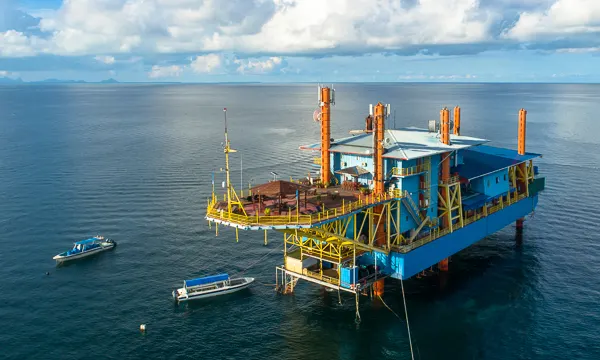
Scuba diving in
Mabul and KapalaiHighlights
- Perfect for exploring Sipadan’s diving and amazing marine life
- Dive the local reefs with their diversity of reef fish and critters
- Search for frogfish, seahorses and flamboyant cuttlefish
- Explore artificial reefs with schooling fish and giant groupers
Set amidst an intricate maze of coral reefs, and just 45 minutes from Sipadan, Mabul Island diving is amongst the best in Malaysia. Perfect for those keen to explore Sipadan’s incredible marine life, the islands also offer amazing ‘muck’ diving in their own right. And if you are looking for that perfect tropical diving package - sandy beaches, palm trees and unique villages - Mabul and Kapalai have all of that, and more!
Diving Mabul and Kapalai
- TrevallyYear round
- Rare OctopusYear round
- Flamboyant cuttlefishYear round
- MandarinfishYear round
- SeahorsesYear round
- Unique crabs & shrimpsYear round
- Exotic NudisYear round
- Artificial reefsYear round
- Ghost pipefishYear round
- FrogfishYear round
- Marine turtlesYear round
Update Oct 2023 - The nearby island of Sipadan will be closed for the month of November every year in order to give the reefs and marine life a respite from dive tourism
Mabul and Kapalai can be summed up in one word - ‘muck’! At Mabul Island and Kapalai, diving is all about diversity and interesting critters, rather than great visibility and big fish. Although there are some interesting reefs, they are not a patch on those of Sipadan nearby. But the mix of different habitats around Mabul and Kapalai means a great diversity of life and these islands have become well known for unusual species and ‘muck’ critters. There are even artificial reefs around Mabul and Kapalai that have attracted a great deal of life - including giant groupers for those that need their big fish fix!
A typical dive on Mabul or Kapalai might mean hunting for leaf scorpionfish, frogfish, ribbon eels, different crustaceans and ghost pipefish. Blue ring octopus are also commonly found here. The sheltered sandy bays are home to more sought after ‘muck’ critters including the elusive mimic octopus, Ambon scorpionfish, frogfish, flamboyant cuttlefish, sea horses and some unusual nudibranchs. Wherever you dive, you will encounter amazing numbers of reef fish, schooling snappers and goatfish, sting rays and gobies in the sand, anemones in the shallows with their resident ‘Nemos’, and - this being Sabah - passing turtles.
Diving Environment
Muck diving and reefs
Beginner upwards
All year
5 - 35m
5 - 25m
26 - 29c
Top tips
Make sure you dive Paradise 1 - this seemingly featureless site is Mabul’s signature ‘muck’ site and the best place to find seahorses and mimic octopus.
Keep an eye open for some very large giant grouper around the artificial reefs by the SMART jetty on Mabul.
The reefs close to the Kapalai jetty are a great place to hunt for blue-ringed octopus.
About Mabul and Kapalai
Mabul Island and the sandbar of Kapalai lie in shallow water close to the edge of the Celebes Sea, just under an hour from Semporna by boat. Mabul is your typical tropical island with shallow fringing reefs, beaches of sand and coral rubble, coconut palms and pandanan trees and several small villages. The island is also home to several dive resorts and a converted accommodation rig - Seaventures - anchored to the north.
Just 10 minutes away by boat, Kapalai is an isolated sandbar on the sheltered northern side of a large reef. Many years ago, the island had palm trees and other vegetation but shifting sands and storm erosion washed away the plants, leaving a bare stretch of sand. The sandbar is now home to a stunning resort built across the shallow lagoon along the edge of the reef - the ultimate in isolated luxury!
How to get to Mabul
Mabul Island is just an hour by boat from the nearby port of Semporna. International visitors flying into Sabah normally arrive at Kota Kinabalu, the state’s main international airport. You can then transfer onto another flight to Tawau, or overnight in KK before catching a morning flight the next day. Once in Tawau, buses transfer guests to Semporna, then onwards to Mabul by boat. To make life easier, all of the resorts in the area offer return transfers between the resorts and Tawau airport.
Where to stay
The first resorts on Mabul and Kapalai were developed during the early days of Sipadan’s fame and planned as alternative accommodation for those wanting to dive Sipadan. However, with the rise of ‘muck’ diving, it was soon discovered that the diving around Mabul and Kapalai were reason enough to come and stay.
Today, there is a great range of options for visitors - from budget style lodges, converted platforms and luxury resorts - and all have access to the fantastic diving on the local reefs, and at Sipadan. Guests can easily book a Mabul diving package that matches their budget.
Seasons and weather
The weather and seasons are typical of Sabah’s east coast. The islands can experience some rough and stormy weather during the wet season between November and March, especially January, and in August can also experience the effects of typhoons in the Philippines. The best times to visit are normally at the end of the wet season in April and May and the end of the dry season in September and October. However, weather conditions and seasons have become a little more unpredictable in recent years and, this being a tropical area, it can rain at any time of year!
Dive conditions on Mabul and Kapalai are not as good as at Sipadan, but when your head is down in the corals hunting for critters, the visibility does not matter so much. Visibility averages 10-15m, and can drop to 5m when the weather and waves are bad, or increase to 20-25m on a good day. Water temperatures are normally 26 - 29C.
























